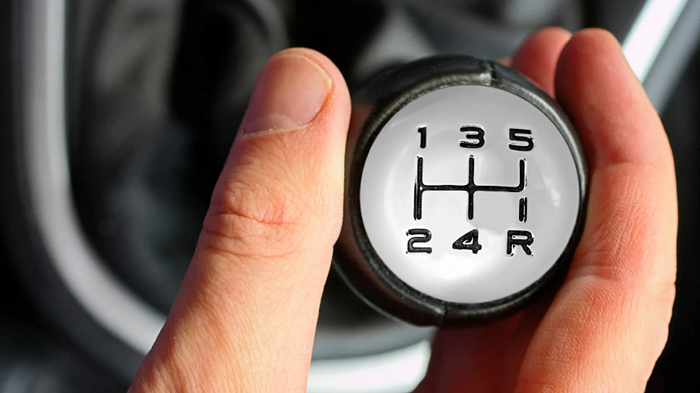In most cars with a stick, the gears are arranged in an H-shape (the gear selector has neutral in the center, and the “steps” diverge in pairs up and down).
How to change gears correctly on a manual transmission? —by moving the lever to the left or right, the driver aims at the desired range, performing a preparatory action in a neutral position. And by pushing the handle forward or backward, the desired stage is already activated.
On modern passenger cars, the number of gears usually varies from five to six, not counting reverse and neutral. Although there are exceptions: outdated 4-speed gearboxes are still found (for example, on classic Zhiguli cars) or, conversely, advanced sports 7-speed units (Porsche 911). In essence, the technique is still the same: controlling the “mechanics” is a universal skill and is suitable for any model.
The most common question from newbies is: how do you know when to change gears? If we talk about accelerating a car, then for efficiency it needs to be done when the engine produces maximum power, which happens close to its maximum speed, so that when you engage the next gear you will be in the zone of maximum torque. It is definitely difficult to answer the question at what speed to change gears. This depends on the vehicle characteristics and maximum torque range. For some models it is “bottom”, while for others it is closer to the “red zone”.
In the first stages of preparation, it may be difficult for the driver to figure this out. Therefore, beginners are usually told at what speeds to change gears, like “in first you go up to 20 km/h, in second up to 60 km/h” and so on.
It is, of course, easier to navigate by the speedometer, but it is still more correct to learn to immediately understand “by ear” when you need to change gears, taking into account the load that the engine can handle and the modes in which it can do this. Moreover, almost all cars with “mechanics” now have tachometers (a device that shows the crankshaft speed). It is important to remember: too low speeds are just as harmful as high speeds – at them the engine does not develop the necessary torque. Therefore, switching the gearbox should be smooth and timely – try to keep the engine in the active operating range, when it easily, without strain and with a reserve, carries the car. It is somewhat more difficult to adapt to a diesel vehicle than to a gasoline vehicle, because it already has a working speed range, and you will have to switch more often.
However, the basics do not change in any case. Acceleration has begun, the engine is spinning up, and the tachometer needle is approaching the red zone? It’s time to move up into a higher gear. The road went uphill, the traffic slowed down, the speed dropped almost to idle? You need to turn it down to a lower level. By the way, sometimes the car itself tells the driver the optimal moment: for this, a special indicator in the form of arrows is built into the instrument cluster, which suggests that it is time to shift the gear up or down in the corresponding direction of the arrow.
But in general, the key to competent work with the “mechanics” lever is, again, experience. You need to drive more, analyze different situations and your driving style. And then even in seven gears you will navigate at ease.


